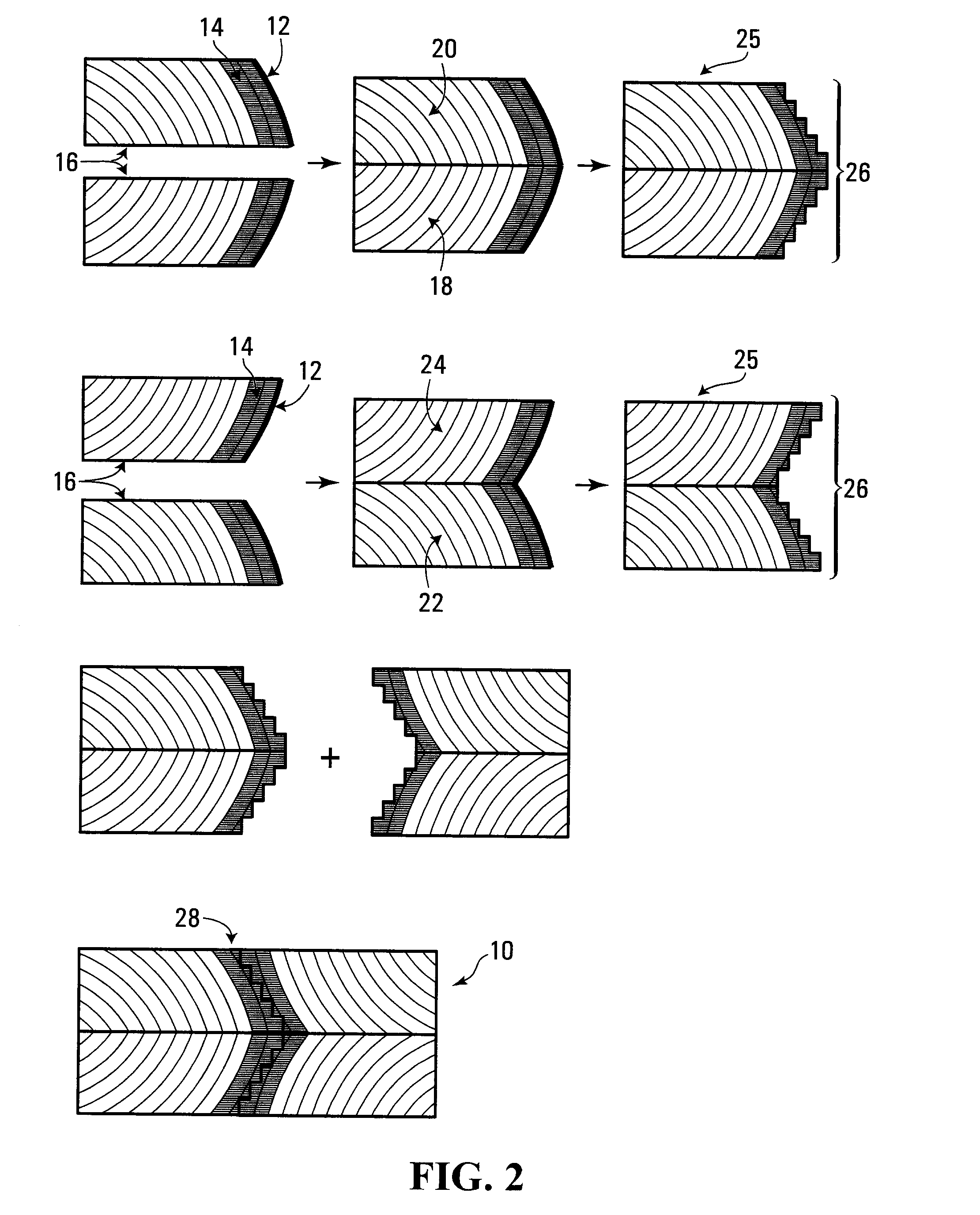Composite wood product and method of manufacture utilizing wood infected by bark beetles
a technology of bark beetles and composite wood products, which is applied in the field of making composite wood products, can solve the problems of destroying the targeted tree, affecting the appearance or aesthetic value of lumber, and accumulating dark pigments in the sapwood of lumber, so as to prevent termites from infesting the wood
- Summary
- Abstract
- Description
- Claims
- Application Information
AI Technical Summary
Benefits of technology
Problems solved by technology
Method used
Image
Examples
example 1
Aesthetic Appearance is Improved in Composite Wood Post Products Produced from MPB-Infested Wood
[0118]A study was conducted in order to observe the aesthetic value of the composite wood post product, as shown generally at 10 in FIG. 1. A total of approximately 200 pieces of 2″×4″×8′ utility grade lumber were sorted into four categories based on the degree of wane. Two points of wane along the length of each piece of lumber were measured and averaged to determine the grade type. The resultant four grade types were defined as follows: Grade 1 (no wane); Grade 2 (¼″¾″ wane). Approximately 48 pieces of 2″×4″×8′ No. 2 and better grade lumber without wane were selected as a control for this study.
[0119]After sorting, 24 pieces of lumber were randomly selected from each grade as defined herein. A total of 96 pieces of 2″×4″×8′ utility grade lumber with wane and blue stained sapwood were selected.
[0120]All lumber was planed to a thickness of 1.5 inches on the two wide faces. The utility gra...
example 2
Aesthetic Appearance of the Longitudinal Joint in Composite Wood Products
[0125]A study was conducted in order to observe the aesthetic value of the composite wood product formed by stepwise bonding as described in WO 02 / 068164 (Chow et al.). A study was conducted wherein 400 pieces of lumber were profiled using a series of right-angled steps, as detailed in Chow et al. The profiled lumber was then joined, as detailed in Chow et al. The blue stain on the surface of the resultant composite wood product was reduced from approximately 50% prior to the production of the composite wood product, to approximately 15% following the production of the composite wood product. The water absorption characteristics of this product are shown in Example 6.
example 3
Strength Properties of Composite Wood Post Products
[0126]A study was conducted in order to observe the strength properties of the composite wood post products. The static bending test in accordance with the ASTM standard D198 using 4-point loading with a span of 1245 mm and a load span of 415 mm was employed. Crosshead speed was at 3.14 mm / min so to achieve the maximum load in about 10 minutes. The sample dimensions were 2.6″×3.4″×6′ for both the control and the composite wood products produced by an embodiment of the methodology described herein.
[0127]Four composite wood post products, termed NP1, NP2, NP3, and NP4, were studied; the terms NP1, NP2, NP3, and NP4 describe the four grades of wane as described herein and were present in a post form as described generally in FIG. 1. NP is an inventor's term for “New Product”. Moisture content and density were determined for each post prior to testing.
[0128]Table 2 depicts the static bending strengths and the void ratio in the end secti...
PUM
| Property | Measurement | Unit |
|---|---|---|
| thickness | aaaaa | aaaaa |
| pressure | aaaaa | aaaaa |
| angle | aaaaa | aaaaa |
Abstract
Description
Claims
Application Information
 Login to View More
Login to View More - R&D
- Intellectual Property
- Life Sciences
- Materials
- Tech Scout
- Unparalleled Data Quality
- Higher Quality Content
- 60% Fewer Hallucinations
Browse by: Latest US Patents, China's latest patents, Technical Efficacy Thesaurus, Application Domain, Technology Topic, Popular Technical Reports.
© 2025 PatSnap. All rights reserved.Legal|Privacy policy|Modern Slavery Act Transparency Statement|Sitemap|About US| Contact US: help@patsnap.com



